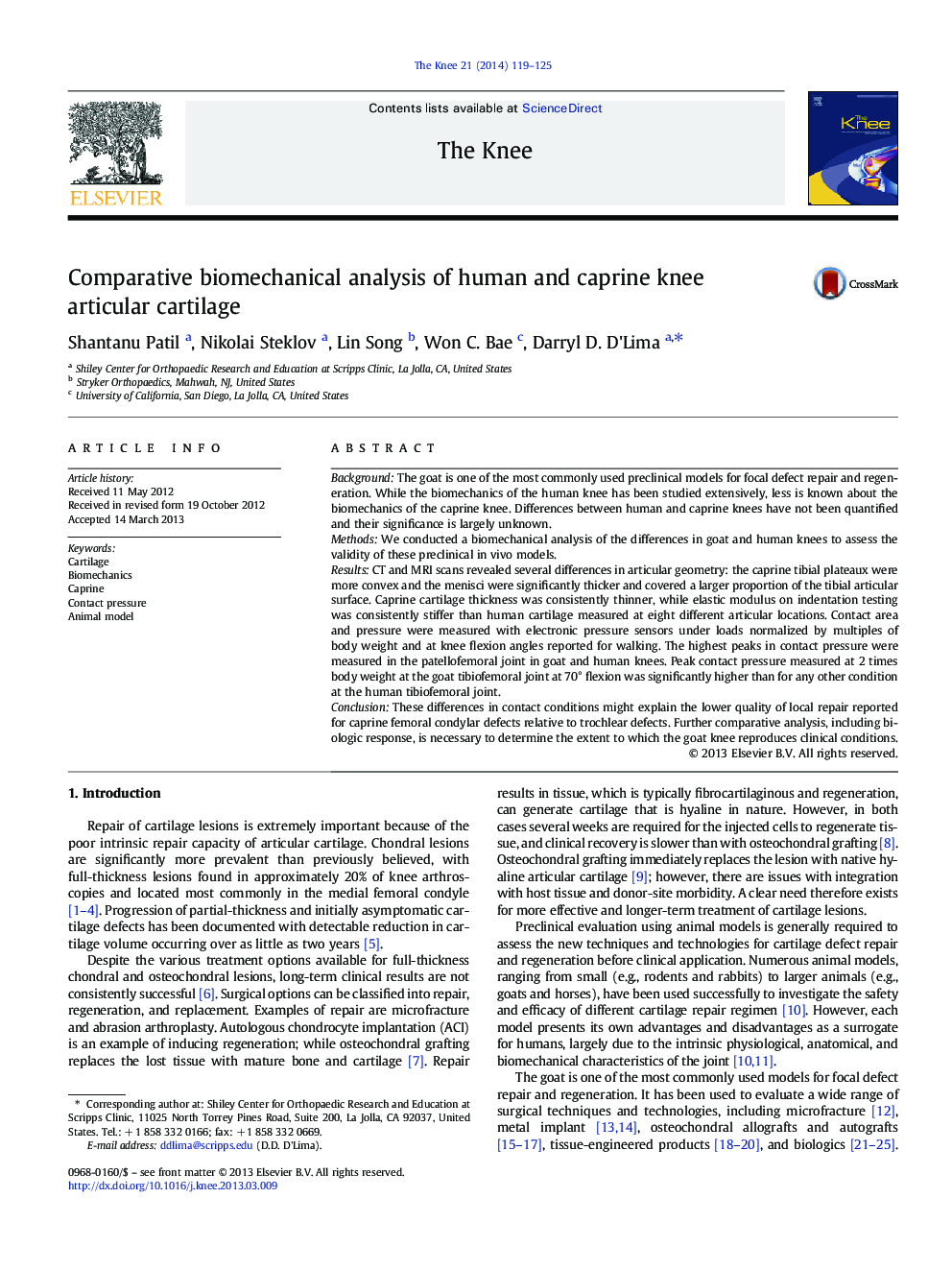| Article ID | Journal | Published Year | Pages | File Type |
|---|---|---|---|---|
| 6211229 | The Knee | 2014 | 7 Pages |
BackgroundThe goat is one of the most commonly used preclinical models for focal defect repair and regeneration. While the biomechanics of the human knee has been studied extensively, less is known about the biomechanics of the caprine knee. Differences between human and caprine knees have not been quantified and their significance is largely unknown.MethodsWe conducted a biomechanical analysis of the differences in goat and human knees to assess the validity of these preclinical in vivo models.ResultsCT and MRI scans revealed several differences in articular geometry: the caprine tibial plateaux were more convex and the menisci were significantly thicker and covered a larger proportion of the tibial articular surface. Caprine cartilage thickness was consistently thinner, while elastic modulus on indentation testing was consistently stiffer than human cartilage measured at eight different articular locations. Contact area and pressure were measured with electronic pressure sensors under loads normalized by multiples of body weight and at knee flexion angles reported for walking. The highest peaks in contact pressure were measured in the patellofemoral joint in goat and human knees. Peak contact pressure measured at 2 times body weight at the goat tibiofemoral joint at 70° flexion was significantly higher than for any other condition at the human tibiofemoral joint.ConclusionThese differences in contact conditions might explain the lower quality of local repair reported for caprine femoral condylar defects relative to trochlear defects. Further comparative analysis, including biologic response, is necessary to determine the extent to which the goat knee reproduces clinical conditions.
